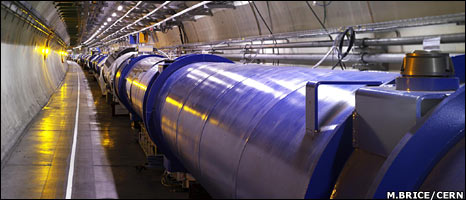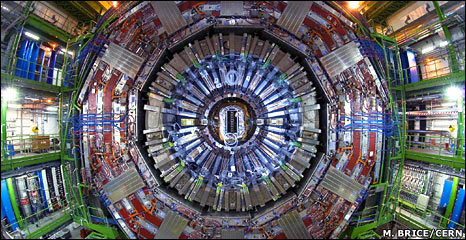Cern lab goes 'colder than space'
Source: BBCNews
Read the entire article in the link above
A vast physics experiment built in a tunnel below the French-Swiss border is fast becoming one of the coolest places in the Universe.
The Large Hadron Collider is entering the final stages of being lowered to a temperature of 1.9 Kelvin (-271C; -456F) – colder than deep space.
The LHC has thousands of magnets which will be maintained in this frigid condition using liquid helium.
The magnets are arranged in a ring that runs for 27km through the giant tunnel.
Once the LHC is operational, two particle beams – usually consisting of protons accelerated to high energies – will be fired down pipes running through the magnets. These beams will then travel in opposite directions around the main ring at close to the speed of light.
At allotted points along the tunnel, the beams will cross paths, smashing into one another with cataclysmic force. Scientists hope to see new particles in the debris of these collisions, revealing fundamental new insights into the nature of the cosmos and how it came into being.
The most powerful physics experiment ever built, the LHC will re-create the conditions just after the Big Bang.
Currently, six out of the LHC’s eight sectors are between 4.5 and 1.9 Kelvin, though all sectors of the machine have been down to 1.9 Kelvin at some stage over the last few months.
By comparison, the temperature in remote regions of outer space is about 2.7 Kelvin (-270C; -454F).



Do you know what you get when you mix high energy colliders with Professor Otto Rossler’s charged micro black hole theory?
Answer: a golf ball
http://translate.google.com/translate?u=http%3A%2F%2Fwww.20min.ch%2Fnews%2Fwissen%2Fstory%2F24668213&hl=en&ie=UTF8&sl=de&tl=en